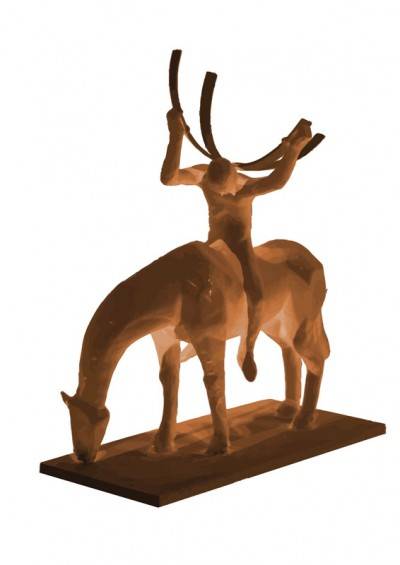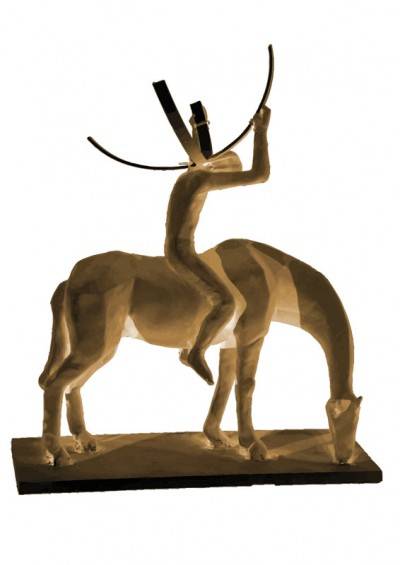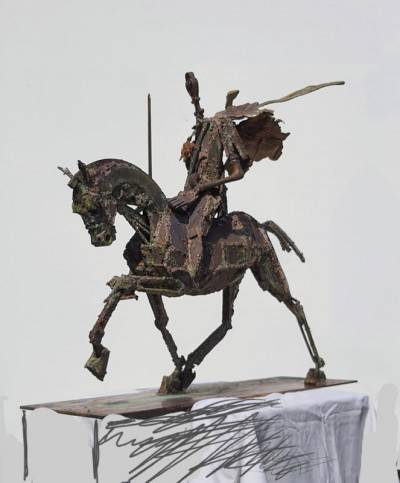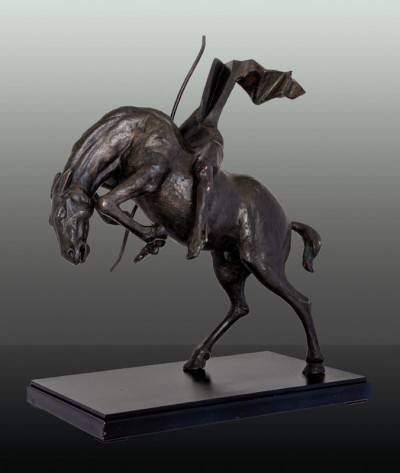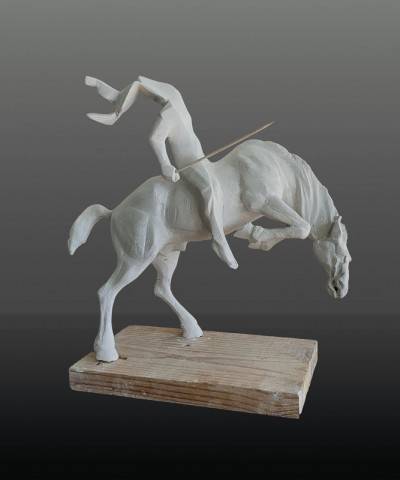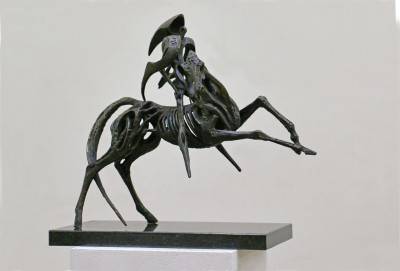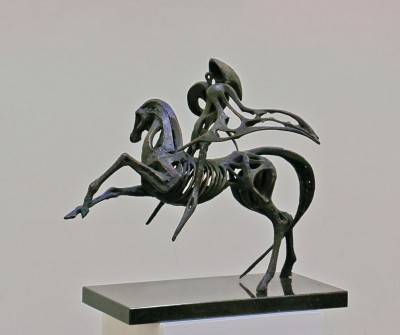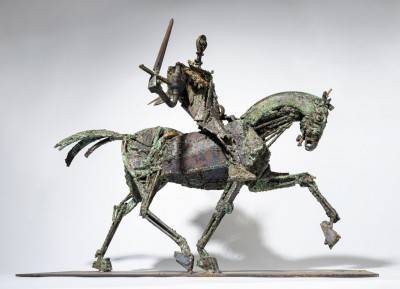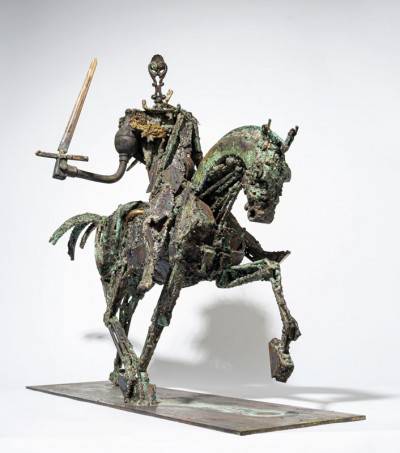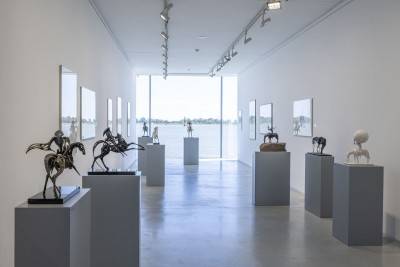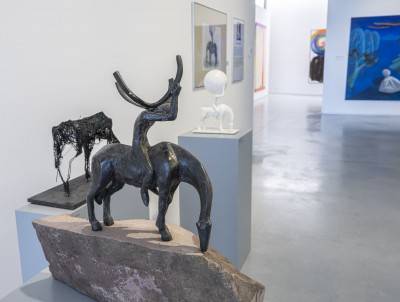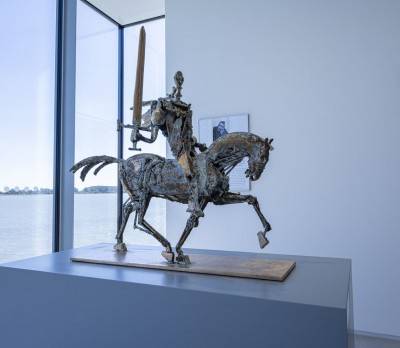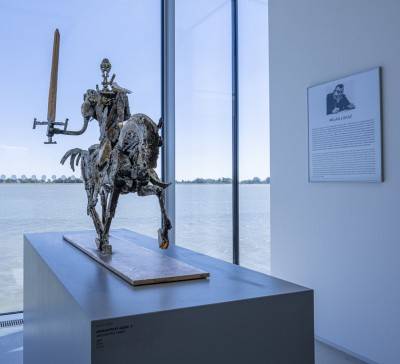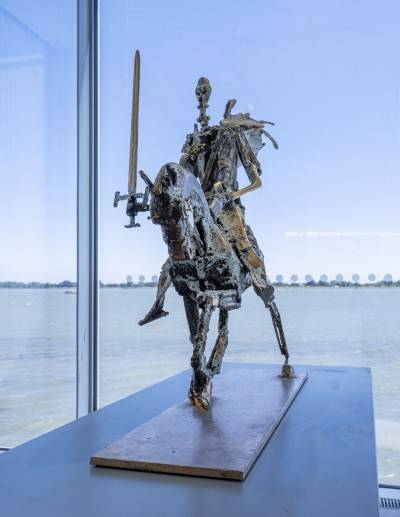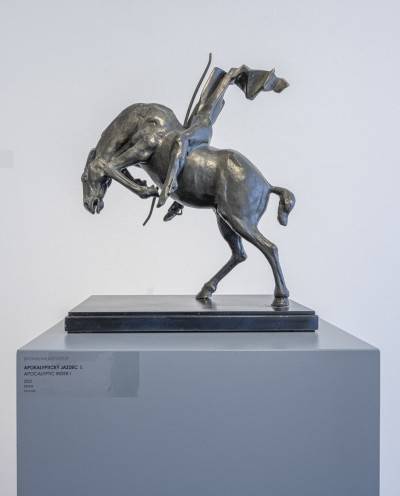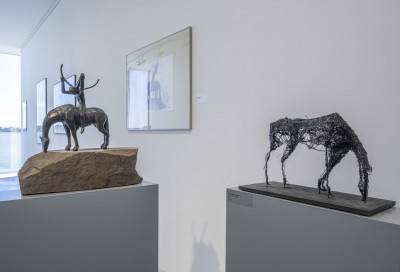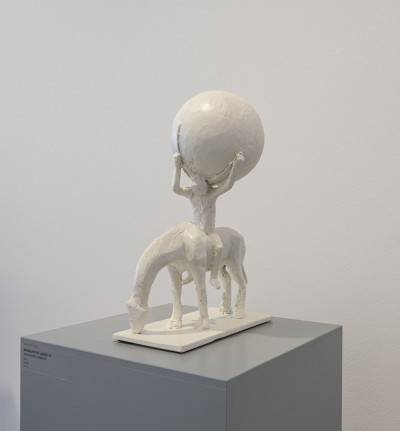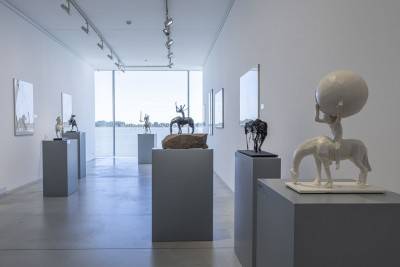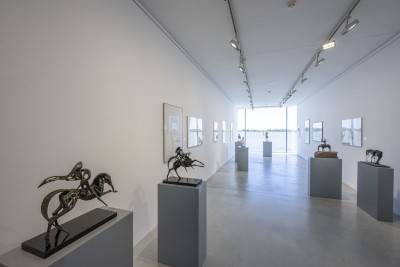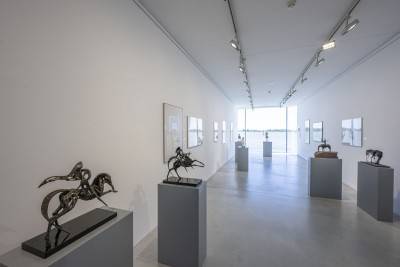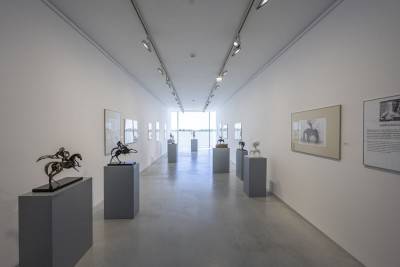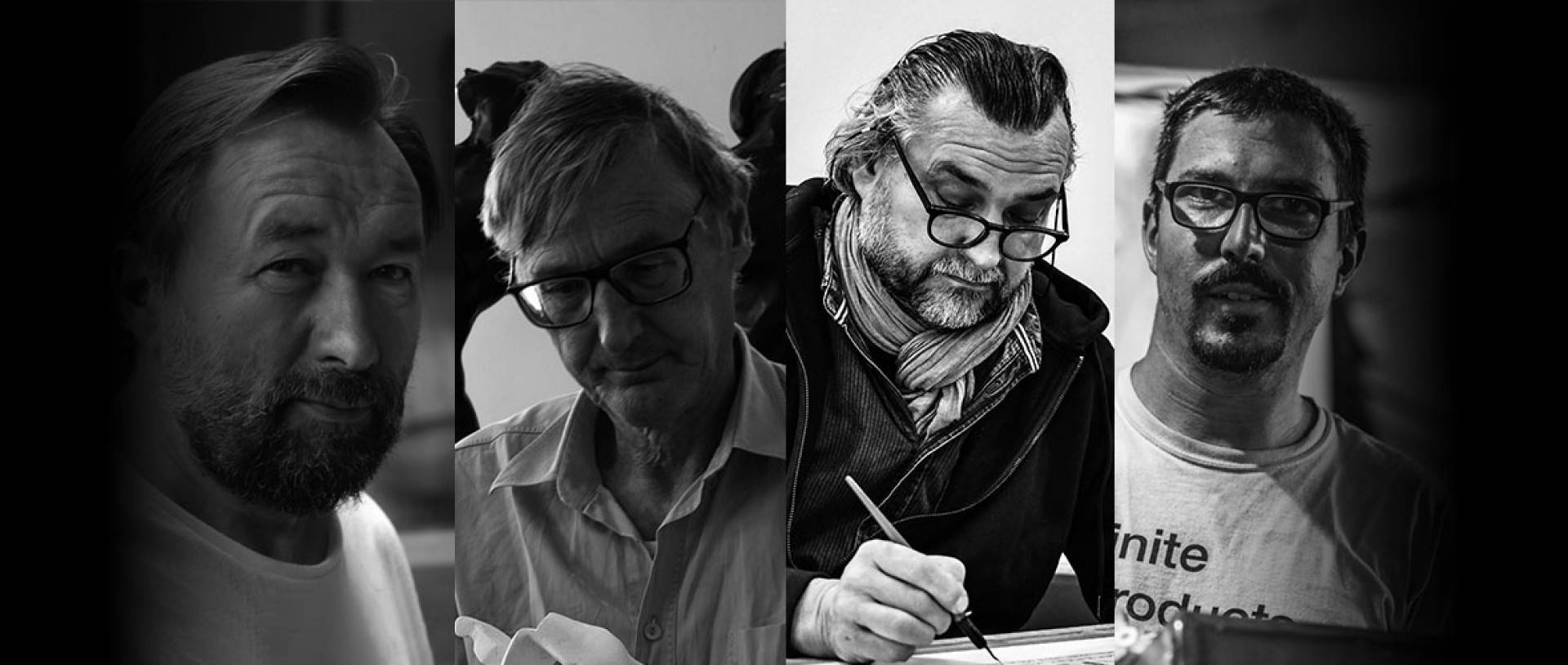

The sculptures and drawings for the exhibition entitled Apokalyptickí jazdci / The Four Horsemen of the Apocalypse at the Danubiana Aquamarine exhibition space were created by four Visegrad sculptors in accordance with the project developed by Broniłsav Krysztof. It was presented for the first time in 2021 in Bielsko-Biala and Wroclaw. The sculptors are Krysztof from Poland, Peter Nižňanský from the Czech Republic, Marek Brzózka from Hungary and Milan Lukáč from Slovakia. Each was given the task of creating and personalizing in drawing his vision of one of the four horsemen of the Apocalypse mentioned in the Revelation of Saint John. However, they were also instructed to capture three basic artistic principles: the silhouette of a horse, the silhouette of a horseman and his symbols. The Four Horsemen of the Apocalypse have been depicted in the works of Albrecht Dürer, Hieronymus Bosch and Pieter Bruegel, among others; however, they always symbolized misery on earth, devastation of the land and the senseless killing of people, i.e. an apocalypse which also lives and resonates in our times. They represent the future of mankind, its extinction or Satan’s game leading towards destruction and the end of the world. The first horseman arrived on a white horse with the symbol of a bow and represented a conqueror. The second Red (fiery) Rider with his symbol, a sword, brought war and killing. His red horse also symbolized the destruction of the land by fire. The third Black Rider brings desolate and burnt land, famine and poverty. Weighing scales are his symbol which should bring people the same amount of wheat and barley to prevent hunger. The fourth rider arrives on a deathly pale horse. He represents a country ravaged by war and its consequences, such as the Black Death. A long sword is his symbol. Thus, the works of the four horsemen by four artists from the Visegrad Four draw attention to current events and human suffering and depict ancient thoughts constantly reoccurring in religion, art and literature.
Dagmar Srnenská Kudoláni
BRONISŁAW KRZYSZTOF
Narodil sa 21. 6. 1956 v Mszanej Góme. V roku 1981 absolvoval Fakultu sochárstva na Akadémii výtvarných umení vo Varšave u prof.Jerzyho Jarmuszkiewicza. 25 rokov pracoval ako designer pre Sisley Cosmétics v Paríži. Venuje sa monumentálnej tvorbe, soche, medaile, kresbe, plagátu a grafike, je pedagogicky činný. Žije a tvorí v Bielsko-Bialej.
MILAN LUKÁČ
Lukáč was born on September 29, 1962 in Bojnice. From 1981 to 1987 he studied under prof. Ladislav Snopek and prof. Ján Kulich in the Department of Relief and Figural Sculpture at the Academy of Fine Arts in Bratislava. From 1985 to 1986 he studied under prof. Jean Cardot at Atelier Taille Directe of l'École nationale supérieure des Beaux-Arts in Paris and from 1988 to 1990 he served as assistant professor in the Department of Sculpture at the Academy of Fine Arts in Bratislava. In 1998 he became associate professor at the academy. He has been teaching at the Faculty of Architecture of the Slovak University of Technology since 1990, and in 2011 he became the head of the Institute of Visual Arts and Multimedia. Lukáč lives in Bratislava and in addition to teaching, he is active in sculpting, drawing and painting. He has taken part in internships at Cité internationale des arts in Paris, Niort, Madrid and Vienna and has won the following awards: Award of Young Sculptors at the Académie des Beaux-Arts, Institute de France in Paris (1985), Martin Benka Award (1988), Paul Louis Weiler Prize (1990) and Prix Itineraire (1998).
MAREK BRZÓZKA
Brzózka was born on December 25, 1983 in Szeged. In 2002 and 2003 he specialized in decorative sculpture at the Tomőrkény István Vocational Art School in Szeged and in January 2003 he participated in a fellowship under prof. Hermann Pitz at the Academy of Fine Arts in Munich. From 2003 to 2008 he studied in the Studio of Figural Sculpture under prof. Kő Pál and prof. Gálhid Péter at the Academy of Fine Arts in Budapest. He is active in monumental art, sculpting and drawing. He lives and works in Szeged.
PETER NIŽŇANSKÝ
Nižňanský was born on July 7, 1956 in Dunajská Streda. From 1971 to 1978 he studied at the Secondary School of Applied Arts in Bratislava and then from 1978 to 1984 at the Academy of Fine Arts in Prague in the studio of prof. Jiří Bradáček. In 1981 he participated in an internship at the Bayerische Akademie der Schönen Künste in Berlin. In his predominantly figural, chamber and monumental pieces he works with wood, stone, fiber cement, tin and bronze. He is also a restorer and medalist. He lives and works in Prague.
